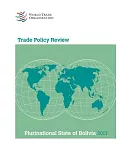In recent years central bankers have placed new emphasis on communication with financial markets and the general public. They have done this not only through the traditional channel of
monetary policy pronouncements but also by increasing the quantity of information they make public. Yet as central banks strive to provide more and clearer information about the outlook for
the economy, they must balance their capacity to steer economic expectations with their natural caution about committing to future monetary policy paths. This volume offers a variety of
perspectives on the economic implications of increased central bank communication. Contributors offer theoretical analyses of the effect of central bank communication on the general
macroeconomic environment; consider a variety of novel empirical approaches to the issue; and analyze communication, decision making, and governance practices of the Greenspan-era U.S.
Federal Reserve, the fledgling European Central Bank, and a variety of smaller central banks, including those of the Czech Republic, Sweden, England, and New Zealand.
Contributors:Helge Berger, Michelle Bligh, Marianna Blix-Grimaldi, Aleš Bulír, Robert Chirinko, Martin Cihák, Christopher Curran, Paul De Grauwe, Jakob de Haan, Michael Ehrmann, Marcel
Fratzscher, Petra Geraats, Gregory Hess, Roman Horváth, David-Jan Jansen, Özer Karagedikli, Michael Lamla, David Mayes, Alberto Montagnoli, Pierre L. Siklos, Katerina Šmídková, Jan-Egbert
Sturm, Jan Zápal





















